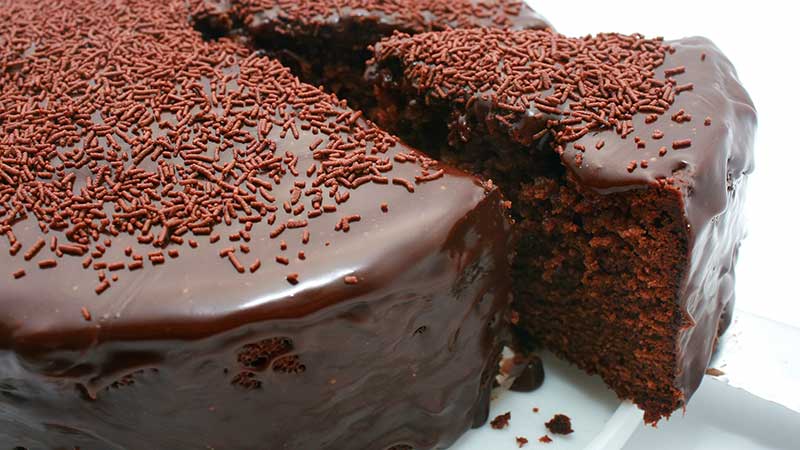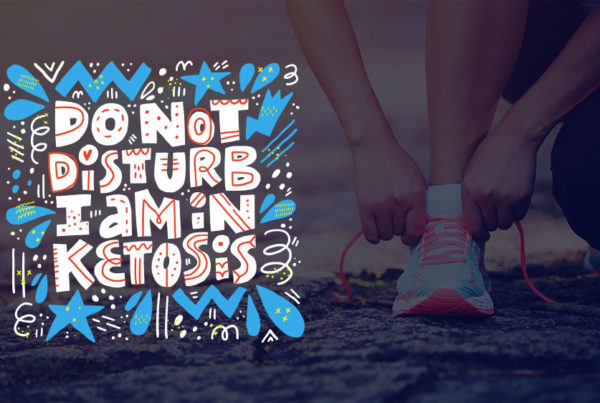
The devastating vicious circle of mind control and sweet cravings when visual images take over rational thought
The junk food industry is really a game of mind control, and so much of this is done through marketing of visual imagery.
A picture is worth a thousand words. That’s why advertisers have long used photos to effectively trick the brain into believing that we really do want that piece of dark chocolate cake with icing. Even reading these few descriptive words are sufficiently enticing to generate an image in our minds.
The onslaught is relentless, with pictures flashing online, on billboards, at the checkout counter, even the gas pump. Moreover, these images are force-fed to us in print media, movies, TV programming, video games, theaters, concerts, and, essentially everywhere we go, including social media such as Facebook, Twitter and Instagram.
Marketers have long studied and embraced the neurobiology of mind control, using it to successfully market junk food, and its most dangerous ingredient, sugar. This sweet but deadly substance is now the most popular cuisine on the planet, triggering the global overfat pandemic with mass trickle-down disease in the wake.
Visual images stimulate other senses as well, helping create a complete mental imagery including taste, smell and even texture, together more powerful than the photo itself.
The strategy is simple — show enticing but phony images of junk food that instill a sense of fun or happiness. Even though consumers know it’s too good to be true, they’re convinced it will make them feel as good as the images they see.
The Porn Part
“Food porn” is not just the perfect advertising vehicle, but the perfect term for it. Advertisers generate systems of meaning, prestige and identity in the mind by associating junk food through subtle visual imagery depicting certain false symbolic values and pleasures, even lifestyles. In short, consumer manipulation shapes consciousness and behavior.
Alluring food photos work. They do so through thousand-word single images, and videos too, thanks to the work of art directors, photographers, food stylists, prop stylists and others. Most of this market is for “sexy” junk-food photos that exaggerate the portion, taste, sizzle and desire. The industry name for this is food porn (perhaps first defined by feminist Rosalind Coward in her 1984 book Female Desire).
As a glamorized, provocative and touched-up visual glorification of unhealthy food, not unlike a substitute for sex, food porn cleverly and effectively mesmerizes the mind.
Beginning with color ads in the 1930s, food photography got tasty-looking. Craving-inducing colors, though, were as fake as the food, which used varnish for shine, soap bubbles for foam, and glue in place of cereal milk. Today food photos are required to start with the actual food, but adding deodorant, hair spray and motor oil to dress it up is accepted practice.
Through its emotional effect, this marketing mind-control creates and maintains an impaired brain with altered unnatural responses. Consumers react to these food cues in unhealthy ways, leading to eating more junk food, even rationalizing what is, or is not, junk food. The process is continually reinforced over time.
The media, of course, partners with advertisers to significantly share in the profits.
This marketing works so well because junk foods have already preconditioned our senses: An impaired mind makes it more vulnerable to the many cravings, wants and needs.
Decision-making in health and fitness
Along with food porn, another powerful sense — sweet taste — is easily triggered by the right photo, or mental image, further amplifying cravings. Taste is a reason low- or no-calorie foods can be so harmful, not unlike regular sugar. They create an illusion, a brain game that thinks since so-called natural or artificial sweeteners have no calories they are healthier choices. They’re not. Through cephalic stimulation, this trick of taste can potentially trigger a greater metabolic stress than plain sugar.
Yet, while sweet taste can quickly begin a cascade of unhealthy metabolic processes, it’s even more potent at impairing brain function. (And it’s not only sugar, but processed carbohydrates — most of the ones consumed — that quickly turn to sugar after eating.)
Memories associated with taste (like smell) are powerful, too.
Combine taste with food porn, and it’s hard to resist. For many, it’s a feeling of helplessness. The mind loses logic to stop eating sweets, unable to distinguish between immediate unhealthy pleasure and reward versus the real risk of reduced health. Once the brain is captured by the marketing monster, food-choice functions become impaired, maintaining a vicious horrible cycle.
Pop Porn
The problem gets worse when food porn is directed at children. While annual marketing to U.S. kids may now exceed $2 billion, just to make sure, companies also annually spend more than $40 billion lobbying congress against regulations that would restrict unhealthy marketing to kids, including soda taxes.
A children’s marketing approach that is powerful is one we’ve all seen and heard in action — the phenomenon of what has the industry calls pester power. Consistent and repeated pleas to parents to purchase a particular junk food. Associated and even more potent, is the sophisticated negotiation by children who learn to say such things as, I need it to help me in sports (more energy) or it’s important for their health (it has 100 percent of vitamins). This is aided by many junk food items being placed at children’s eye-level in stores.
Taking control of a child’s mind early in life ensures they remain customers as adults, especially as parents and grandparents.
Food Intolerance
It’s simple — the balance of insulin and glucose influences areas of the mind that control food choice. While a healthy brain chooses better food, carbohydrate intolerance (CI), or insulin resistance, can change all that.
CI is a chronic metabolic dysfunction associated with insulin and blood sugar impairment caused by junk food. It causes more carbohydrates to be stored as fat, reducing our ability to burn that fat, so it accumulates (especially in the abdomen). Symptoms include hunger and fatigue, and eventually diabetes, hypertension, and a long list of diseases and physical dysfunctions. From its onset, CI profoundly affects the brain, producing sugar cravings, symptoms of depression, anxiety, poor learning and memory, and other mental-emotional problems. And with distorted senses, that single image of chocolate cake becomes a powerful sales tool.
Good News
The good news is the brain and body have an amazing power to recover. Reducing CI is possible by avoiding junk food, helping to normalize metabolism and brain function so we’re more immune to the food porn constantly bombarding us.
This can also reduce excess body fat, improve energy, eliminate excess hunger, and significantly reduce the risk of disease, and physical impairment — even reduce or eliminate the need for medication for diabetes, hypertension and many other conditions.
References
Alsaadi HR, et al. Insulin sensitivity affects corticolimbic brain responses to visual food cues in polycystic ovary syndrome patients. Horm Mol Biol Clin Investig. 2015;24(2). doi: 10.1515/hmbci-2015-0048.
https://onlinelibrary.wiley.com/doi/full/10.1002/oby.20148
Veldhuizen MG, et al. Integration of Sweet Taste and Metabolism Determines Carbohydrate Reward. Current Biology. 2017; 27(16). doi: 10.1016/j.cub.2017.07.018.
Jolly R. Marketing obesity? Junk food, advertising and kids. Research Paper no. 9. 2011. Parliament of Australia. https://www.aph.gov.au/About_Parliament/Parliamentary_Departments/Parliamentary_Library/pubs/rp/rp1011/11rp09








